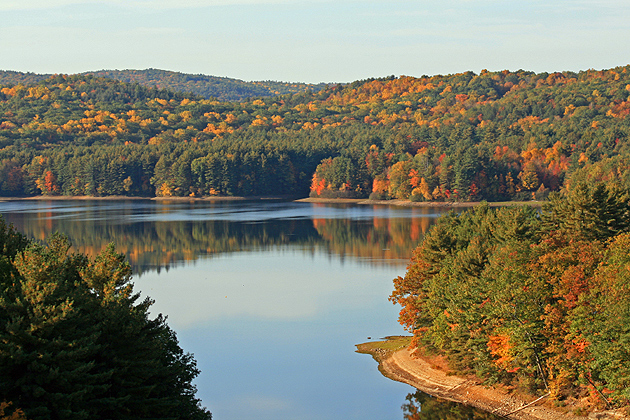
Economics professor Fred Carstensen is director of the Connecticut Center for Economic Analysis, a group of economists who work with Regional Economic Models Inc. to discern the value of virtually all things Connecticut.
Recently, Carstensen and his colleagues took a look at Connecticut’s state parks, forests, and rivers at the request of the state Department of Energy and Environmental Protection (DEEP). They found that the state’s recreational areas contribute more than $1.2 billion toward the state’s economy.
Carstensen spoke with UConn Today about the study.
Q: Why is this study important?
A: We probably all appreciate intuitively the importance of parks and state forests, but it is particularly useful to have some ‘hard numbers’ on their economic value. The parks, forests, and the associated services such as hunting and fishing, licensing, fish hatcheries, and education are not luxuries or a cost to state taxpayers – this study reveals that they are an investment that delivers very significant economic value to the state and its citizens – and generates more than enough tax revenue to pay for itself.
Q: What activities factored into such a large infusion of revenues?
A: Of the $1 billion spent on recreation, visitors to parks and forests spent $544 million in 2010 on general tourism activities in Connecticut such as lodging, meals, groceries, and other activities and goods during their stay. In addition, sports persons holding licenses and permits issued by DEEP spent $264 million related to fishing; $100 million related to hunting; $37 million through recreational boating; and $26.2 million for skiing and attending educational and other venues. The study also shows that nearly 9,000 private sector jobs flow from the activities the state parks and forests support; and associated recreational activities delivered $343 million in personal income.
Particularly interesting was seeing how powerful the trout fishery is for Connecticut, attracting fishermen from a very wide area. One of the trout hatcheries produces brown trout, the “trophy fish” that is the hardest to breed and the hardest to catch. And because we have hatcheries, fishermen know that there are always trout in Connecticut’s rivers and streams. It’s a powerful component in our tourism industry.”
Q: Did the study look at any other factors?
A: Along with the tangible benefits DEEP-managed outdoor recreational opportunities create in the state, the report also found that DEEP’s 250,000 acres of open space increase property values for those whose land borders or overlooks the state property. In addition to the benefit to property owners, the increased property values generated an estimated $3.1 to $5.4 million to municipalities.
Q: What can taxpayers take from the study?
A: At a time when it is common currency to challenge the value that the public sector delivers, this study serves as a powerful reminder that what we do in the public sector may give back to the citizens of Connecticut far more than it costs. This analysis lays out in great detail the very satisfying ‘rate of return’ that taxpayers earn from the work of DEEP in maintaining state parks and forests and providing the critical support services that sustain their quality and access.
Q: How is the study useful to DEEP?
A: Not only are the results gratifying, showing how much value the public derives from our state parks and forests and associated activities in licensing, education, fish hatcheries, camping, etc., but it is the kind of study that ought to inform our policy decisions and budget allocations regularly. DEEP has, I believe, set a standard to which all agencies should aspire in framing the discussion of their activities.
Q: Why should other agencies conduct similar studies?
A: In a period of fiscal austerity, it is particularly important to evaluate public programs, policies, and expenditures. This study offers a sharp reminder that something we might consider a luxury we can ill afford to maintain – our state parks and forests – is in fact an expenditure that generates very substantial returns. In fact, it helps enrich the state, covering its own cost, while providing needed jobs and economic vitality to the state. Our parks and forests are an essential ingredient in making the state an attractive place to live and work.



